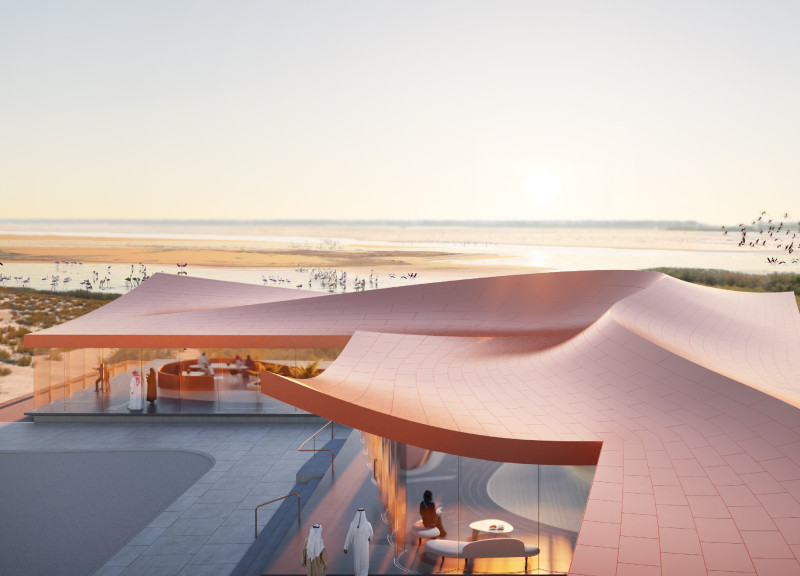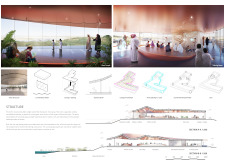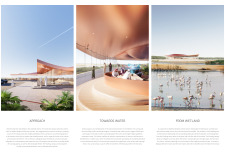5 key facts about this project
The Al Wathba Wetland Reserve Visitor Center is located 40 km southeast of Abu Dhabi and plays a vital role in connecting visitors with the region’s unique ecology and wildlife. Designed to promote understanding and appreciation of the natural landscape, the center adopts a minimalist approach. The primary feature, known as the Dune Canopy, draws inspiration from the soft forms of sand dunes and the traditional Bedouin tent, creating a functional and inviting space.
Design Inspiration
The Dune Canopy captures the essence of the surrounding desert, inviting visitors to engage with the wetlands deeply. Its flowing shape and light structure create a spatial experience that resonates with the natural environment. This thoughtful design reflects local culture while addressing modern needs for flexibility and adaptability within the visitor experience.
Structure and Layout
The layout of the visitor center consists of clusters that organize various functions while avoiding traditional walls. This design approach creates an open environment that encourages fluid movement and interaction. Key components are kept below eye level to allow clear sight lines, promoting visual coherence. Surrounding these functional areas are galleries and display spaces designed to support a continuous flow, enhancing the connection to the natural surroundings.
Materials Utilized
A lightweight carbon fiber framework supports the building, allowing for structural glass panels that provide extensive views of the wetlands. This material choice ensures stability and transparency, allowing natural light to fill the interior. The use of prefabricated components streamlines assembly, reducing disruption to the site. The glass is mounted on a plinth that respects the existing elevation of the landscape.
As visitors approach the center, they encounter the generous canopy with its gently curved edges. It echoes the nearby dunes, offering shelter and shade while creating intimate spots for reflection on the quiet beauty of the wetland landscape.






















































